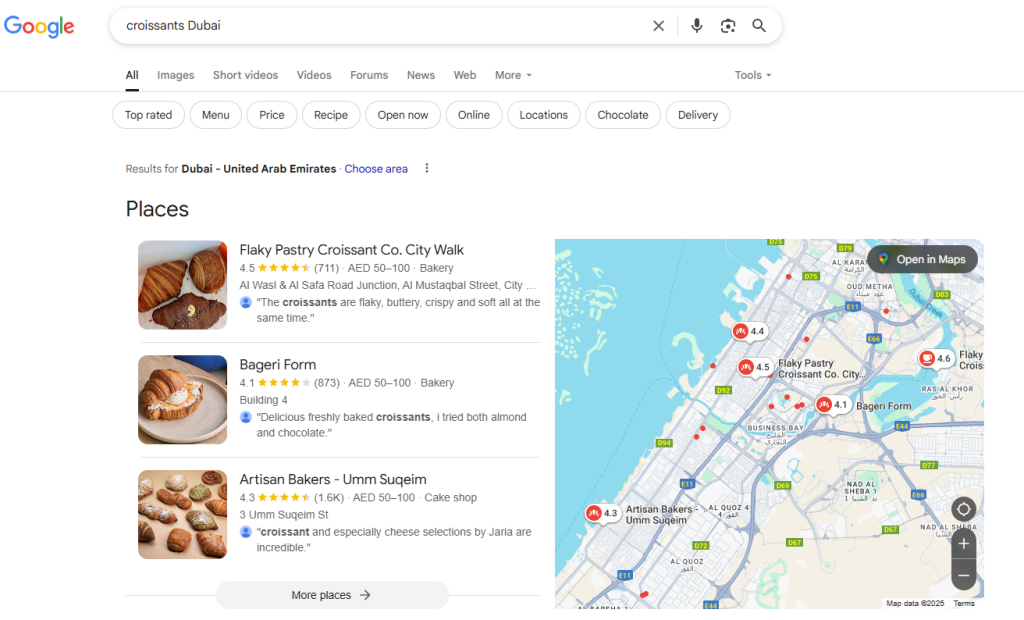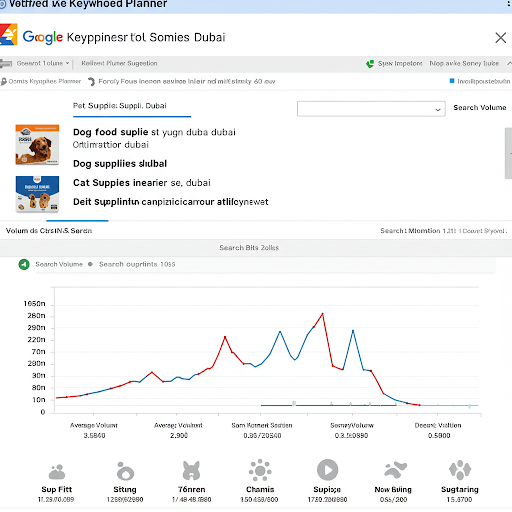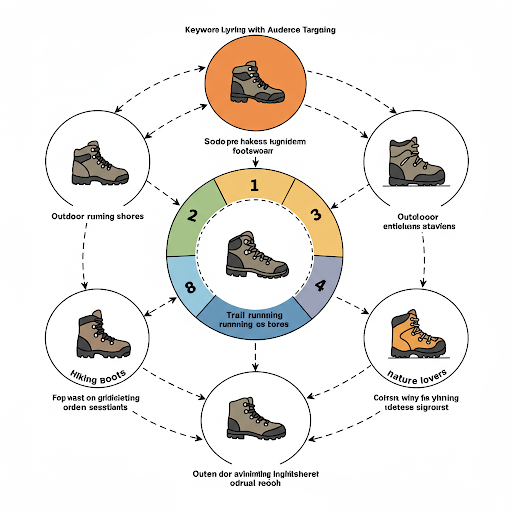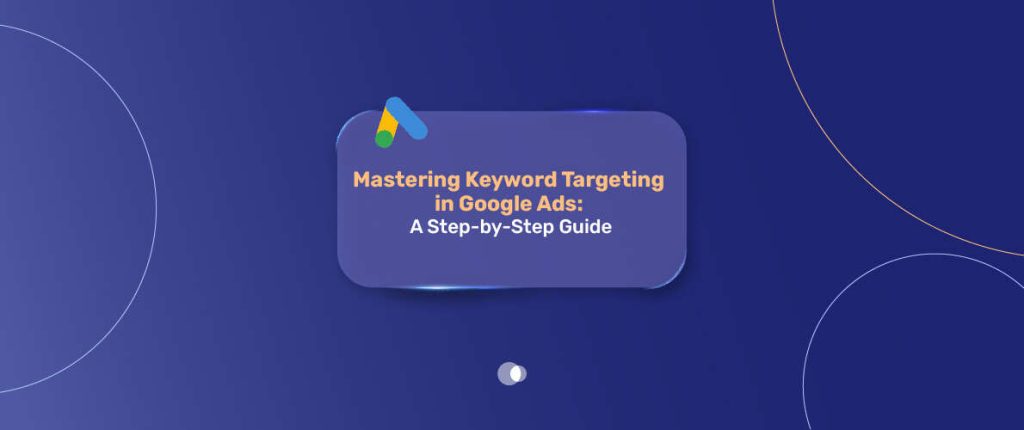Picture yourself running a small Dubai bakery, hoping to catch the eye of someone searching “fresh croissants near me.” Keyword targeting in Google Ads is what makes that connection happen. It’s about choosing the right words to link your ads with customer searches, ensuring your message hits the mark. Get it right, and you’ll see more clicks, better conversions, and a happier budget. Get it wrong, and you’re throwing money at irrelevant clicks. This guide breaks down every step to master keyword targeting, with practical tips for beginners—no marketing degree required. Whether you’re a solo entrepreneur or working with a Google AdWords certified company, you’ll learn how to make your ads pop.
Table of Contents
Keyword targeting isn’t just about picking words; it’s about understanding your audience and their needs. A well-targeted campaign can turn a casual searcher into a loyal customer. For example, a Dubai florist targeting “same-day flower delivery” can stand out in a crowded market. By the end of this guide, you’ll have a clear roadmap to craft campaigns that deliver results, using tools like Google Ads campaign optimization to fine-tune your approach.

Step 1: Know Your Audience and Goals
Before you touch a single keyword, get inside your customer’s head. Who are they? A Dubai tech startup might target young professionals searching for “cloud software solutions.” A kids’ clothing store could focus on parents looking for “affordable baby outfits Dubai.” Dig into their demographics—age, location, income—and their pain points, like “need fast delivery” or “budget-friendly options.” This shapes keywords that match their search language.
Next, define your campaign goals. Are you after brand awareness, leads, or direct sales? Each goal calls for different keywords, and this is where AdWords management Dubai comes into play—guiding your strategy to ensure every click aligns with your business objectives.:
| Goal | Keyword Example | Why It Works |
| Brand Awareness | “Dubai bakery” | Broad, high-volume terms reach new audiences |
| Lead Generation | “cake delivery deals” | Targets users exploring options |
| Sales | “order cupcakes online” | Attracts ready-to-buy customers |
Clear goals keep your keywords focused. For instance, a Dubai gym aiming for sign-ups might target “join fitness classes Dubai” over vague terms like “gym.” This clarity, paired with effective keyword research, ensures your budget isn’t wasted on uninterested clickers.
Step 2: Nail Keyword Research Like a Pro
Keyword research is your treasure map to finding words that drive results. It’s about uncovering what your customers type into Google and building a campaign around those terms. Here’s how to do it right:
Brainstorm Seed Keywords
Start by jotting down terms tied to your business. If you run a Dubai pet store, think “pet supplies Dubai,” “organic dog food,” or “buy cat toys online.” Imagine you’re a customer—what would you search?
These seed keywords are your foundation. Don’t just stick to obvious terms; consider variations like “pet accessories” or “dog treats for puppies.” This step sets the stage for a robust Google Ads keyword strategy.
Leverage Google Keyword Planner
Google’s free Keyword Planner (in your Google Ads account) is a goldmine. Plug in seed keywords, your website URL, or even a competitor’s site to get a list of related terms. You’ll see metrics like monthly search volume, competition, and cost-per-click (CPC). If you’re just getting started or want to fast-track your campaign setup, it’s smart to buy Google Ads account from a trusted provider to skip the initial setup hassle and jump straight into planning with real data..
For example, “pet supplies” might have high competition, but “eco-friendly pet toys” could be a low-cost gem for small budgets. Use the “Forecasts” feature to predict clicks and costs, helping you plan smarter.
Explore Other Tools
While Keyword Planner is king, other tools add depth. SEMrush and Ahrefs show what keywords competitors target, revealing gaps you can exploit. Google Trends highlights seasonal spikes—think “pet Halloween costumes” in October.
AnswerThePublic uncovers questions like “what’s the best dog food for allergies?” Moz or Ubersuggest offer user-friendly interfaces for beginners. Combining these tools gives you a 360-degree view of your keyword landscape.
Spy on Competitors
Check what keywords your rivals use. Enter their website into Keyword Planner or use SEMrush to see their top terms. A Dubai pet store might notice competitors focus on “cheap pet supplies” but miss “premium pet grooming products.” Don’t copy—find gaps to stand out. This competitive edge is key to effective keyword research.
Understand Search Intent
Keywords aren’t just words; they reflect what users want. There are four main intents:
- Informational: Seeking answers (e.g., “how to choose pet food”).
- Navigational: Finding a site (e.g., “Petco Dubai”).
- Transactional: Ready to buy (e.g., “buy dog leash online”).
- Commercial Investigation: Comparing options (e.g., “best pet toys 2025”).
Match your keywords to intent. For sales, target transactional terms; for blogs, go informational. A Dubai spa might use “book massage Dubai” for bookings and “benefits of deep tissue massage” for education.
| Tool/Method | What It Offers | Example |
| Google Keyword Planner | Keyword ideas, volume, CPC | “eco-friendly pet toys” |
| SEMrush/Ahrefs | Competitor keyword insights | “premium pet grooming” |
| Google Trends | Seasonal search patterns | “pet Halloween costumes” |
| AnswerThePublic | User questions | “best dog food for allergies” |

Step 3: Master Keyword Match Types
Match types are your control panel for how keywords trigger ads. They balance reach (how many see your ad) and relevance (how well it matches searches).
| Match Type | Syntax | Triggers Ads For | Best For |
| Broad Match | pet toys | Synonyms, related terms (e.g., dog toys, pet playthings) | Wide reach, early data |
| Phrase Match | “pet toys” | Phrase with extra words (e.g., buy pet toys Dubai) | Balanced reach, relevance |
| Exact Match | [pet toys] | Exact or close variants (e.g., pet toy) | Precise, high-intent searches |
- Broad Match: Casts a wide net, great for discovering new terms but risks irrelevant clicks. Pair with negative keywords.
- Phrase Match: Targets specific intent with flexibility, like “pet toys” catching “cheap pet toys online.”
- Exact Match: Laser-focused for buyers, like “[organic pet toys]” for eco-conscious shoppers, but limits audience size.
Keyword match type benefits shine when you mix them. Start broad to learn, then use phrase or exact for precision. A Dubai café might test “coffee shop” (broad) to find searches, then “[espresso Dubai]” (exact) for conversions.
Pros and Cons of Keyword Match Types
Each match type has trade-offs. Here’s a quick guide to choose the right one:
| Match Type | Advantages | Disadvantages |
| Broad Match | Reaches a massive audience | Attracts unrelated clicks |
| Uncovers unexpected keywords | Needs constant negative keyword updates | |
| Saves time on keyword lists | Can burn budget fast | |
| Phrase Match | Targets intent effectively | Misses some related searches |
| Allows flexible phrasing | Still requires negatives | |
| Balances reach and control | Less broad than broad match | |
| Exact Match | Highly relevant traffic | Smaller audience reach |
| Boosts conversion rates | Needs more keywords to scale | |
| Tight budget control | May miss variant searches |
For example, a Dubai pet store might use broad match “pet supplies” to explore, then exact match “[organic dog treats]” for high-intent buyers. Test each to find what works best for your campaign.
Step 4: Use Negative Keywords to Save Money
Negative keywords are your budget’s bodyguard, blocking ads from irrelevant searches. If you sell luxury handbags, adding “cheap” as a negative keyword avoids clicks from bargain hunters.
- Search Terms Report: Check what triggered your ads. Add irrelevant terms like “free handbags” as negatives.
- Proactive Brainstorming: Think of related but off-target terms, like “handbag patterns” if you don’t sell DIY kits.
- Match Types: Use broad (blocks all searches with the term), phrase (blocks specific phrases), or exact (blocks precise matches). E.g., negative phrase “handbag repair” stops “handbag repair Dubai.”
| Business | Negative Keyword | Blocks |
| Handbag Store | “cheap” | Cheap handbags |
| Bakery | “recipe” | Cake recipes |
| Spa | “courses” | Massage courses |
Negative keywords are a cornerstone of Google Ads campaign optimization, keeping your spend focused on the right audience.
Step 5: Structure Campaigns for Success
A well-organized campaign is like a tidy shop—everything’s easy to find. Group keywords into themed ad groups to boost relevance and Quality Score, which can lower costs.
- By Product/Service: A Dubai clothing store might have ad groups for “men’s shirts” and “women’s scarves.”
- By Intent: Separate “buy men’s shirts” (sales) from “best men’s shirts 2025” (research).
- Single Keyword Ad Groups (SKAGs): Use one keyword per ad group for ultra-specific ads, though it’s time-intensive.
- Align Ads and Pages: If your keyword is “men’s cotton shirts,” your ad and landing page should focus on that, not generic clothing.
For example, a Dubai gym might create ad groups for “yoga classes” and “personal training,” each with tailored ads and landing pages. This precision is key to a Google Ads keyword strategy.
Step 6: Boost Results with Advanced Targeting
Take your campaigns to the next level with these advanced tactics:
- Audience Layering: Pair keywords with audience targeting. A hiking gear store might target “outdoor enthusiasts” for “hiking boots.” Use “Observation” to track performance or “Targeting” to limit to specific groups.
- Remarketing Lists (RLSA): Show customized ads to past website visitors. Bid higher for users who viewed your products but didn’t buy, or highlight special offers.
- Demographics/Interests: Target by age, gender, or interests. A Dubai baby store could pair “baby strollers” with parents aged 25–34 or “in-market” audiences researching baby products.
These keyword match type benefits amplify your campaigns, ensuring ads reach the most likely buyers.

Step 7: Monitor and Optimize Continuously
Keyword targeting is a living process. Regular checks keep your campaigns sharp and your budget efficient.
| KPI | What It Tells You | Goal |
| Click-Through Rate (CTR) | How compelling your ad is | Aim for 2%+ |
| Cost Per Click (CPC) | Budget efficiency | Keep aligned with goals |
| Conversion Rate | Clicks turning into actions | Target 5–10% |
| Quality Score | Relevance of keywords, ads, pages | Aim for 7+ |
- Search Terms Report: Spot winning terms to add as keywords (e.g., “organic cat food Dubai”) and irrelevant ones to block (e.g., “cat food recipes”).
- Adjust Bids: Increase for high-converting keywords, lower for low performers.
- Refine Match Types: Shift broad to phrase/exact for precision, or add new keywords from reports.
- Pause Underperformers: Drop keywords with high CPC and low conversions.
A Dubai jeweler might find “custom gold necklaces” converts well and boost its bid, while pausing “cheap jewelry” if it flops. Google Ads campaign optimization thrives on these tweaks.
Conclusion: Your Roadmap to Keyword Mastery
Keyword targeting is the heartbeat of Google Ads, turning searches into sales. From understanding your audience to structuring smart campaigns, every step builds toward ads that connect with the right people. Dive into research with tools like Keyword Planner, refine with negative keywords, and test match types to find your groove.
Keep monitoring KPIs to spot winners and cut losers. Whether you’re a Dubai startup or a global brand, effective keyword research and ongoing optimization will set you apart. Start small, experiment, and watch your ads dominate Google’s search results! If you need help getting there, consider partnering with top-tier Google Ads optimization services Dubai to maximize your campaign’s potential.
Frequently Asked Questions
How do I start keyword research for Google Ads?
List terms your customers might search (e.g., “pet supplies Dubai”), then use Google Keyword Planner for ideas, search volume, and costs. Think like your audience and explore tools like SEMrush for competitor insights.
What’s the best match type for beginners?
Phrase match is ideal—it balances reach and relevance. Use “pet toys” to catch “buy pet toys Dubai” without the chaos of broad match. Test broad later for discovery.
Why are my ads getting irrelevant clicks?
Broad match keywords can trigger unrelated searches. Check the Search Terms Report and add negative keywords like “free” or “used” to filter out junk clicks.
How many keywords should an ad group have?
Aim for 5–15 keywords per ad group, tightly themed (e.g., all about “men’s shirts”) for relevant ads and higher Quality Scores. Avoid stuffing too many.
Can I target past website visitors with keywords?
Yes! Use Remarketing Lists for Search Ads (RLSA) to show tailored ads to past visitors. Pair keywords with higher bids or special offers to re-engage them.



